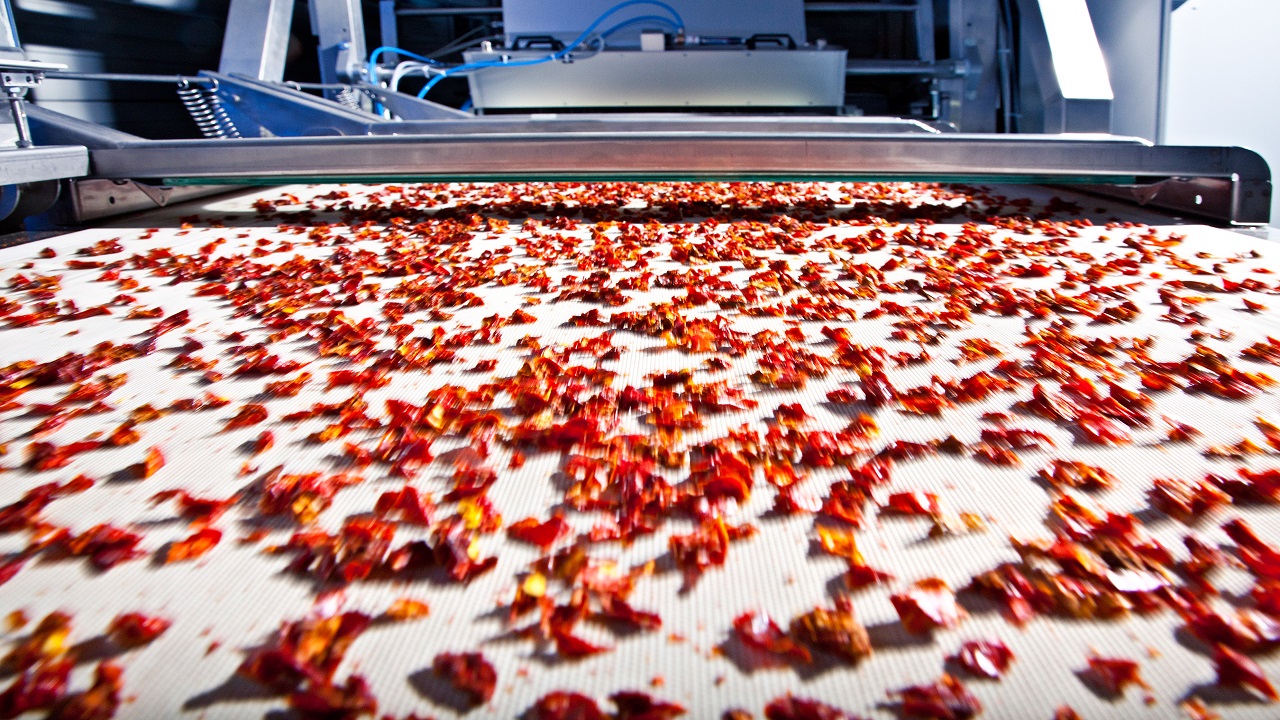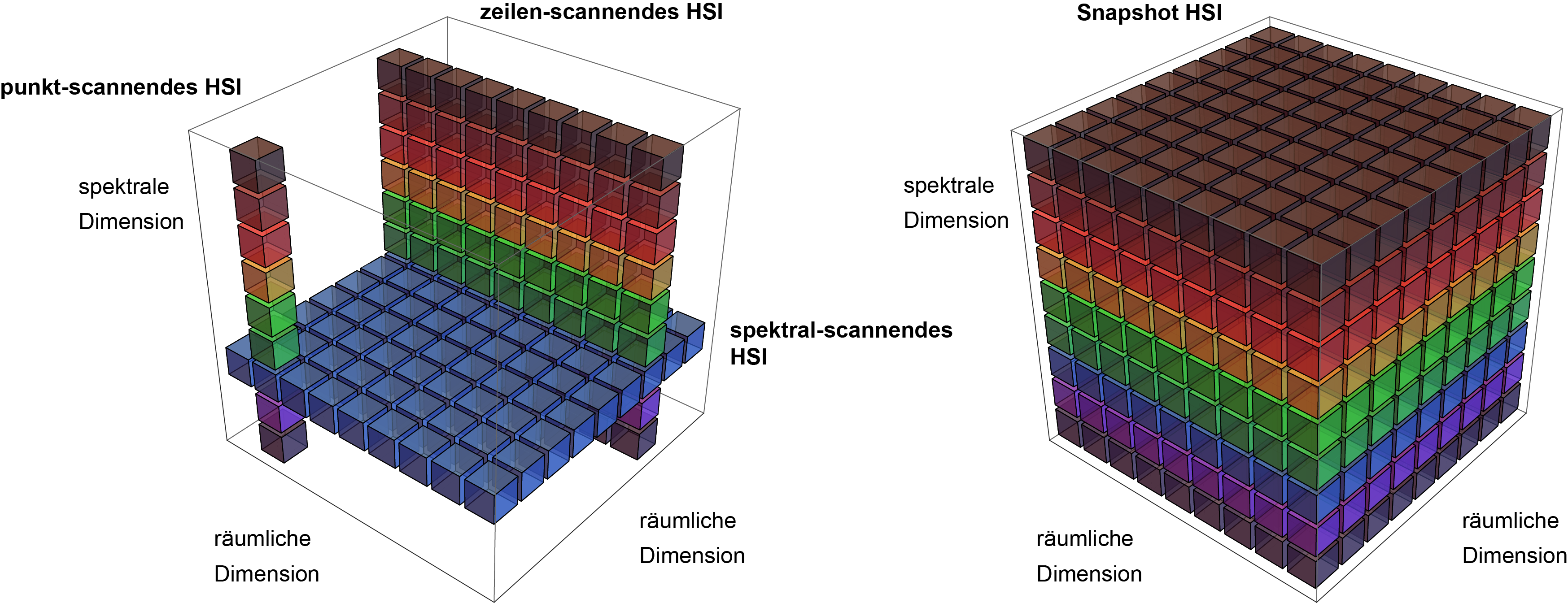
Hyperspectral Imaging
(HSI) combines the advantages of optical spectroscopy with those of spatially resolved image acquisition.
Conventional image processing systems with color cameras are very suitable for checking external quality features, such as the size, shape and color of a product. A particular challenge is the high variability of natural products, which makes it difficult to determine and test objective quality features. In food testing, internal quality parameters are also often important, such as the chemical composition or the freedom from internal defects of a product that cannot be externally detected. For this reason, spectroscopic methods that provide information about the chemical composition and physical properties of a product are suitable for evaluating internal quality parameters. HSI can literally make what is invisible to the human eye visible.
A hyperspectral image has a large number of spectral channels of closely spaced wavelength ranges, which can extend from the ultraviolet range to the long wave infrared. On the basis of the wavelength-dependent reflection behavior of a material, certain chemical properties can be measured, evaluated and graphically represented in a spatially resolved manner by HSI. One therefore speaks of chemical imaging.
This opens up a wide variety of fields of application for the automatic visual inspection. In particular for quality assurance in the food sector, HSI is successfully used for demanding tasks such as the detection of foreign bodies, optical quality sorting (see figure 1) or the inline inspection of agricultural products.
 Fraunhofer Institute of Optronics, System Technologies and Image Exploitation IOSB
Fraunhofer Institute of Optronics, System Technologies and Image Exploitation IOSB 